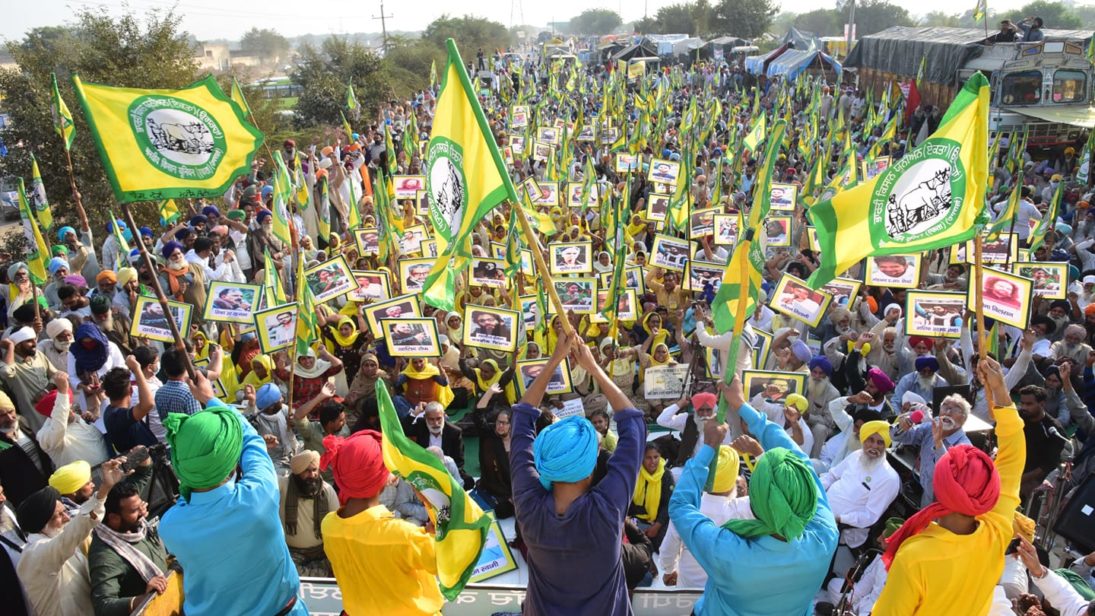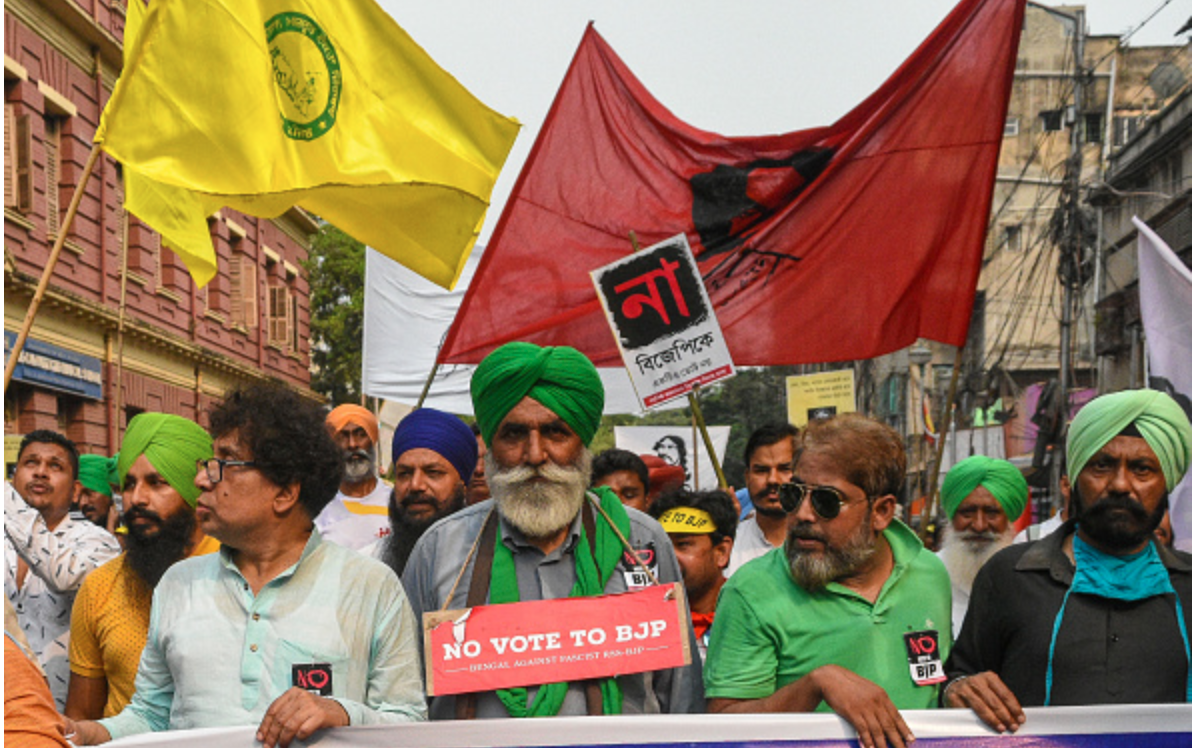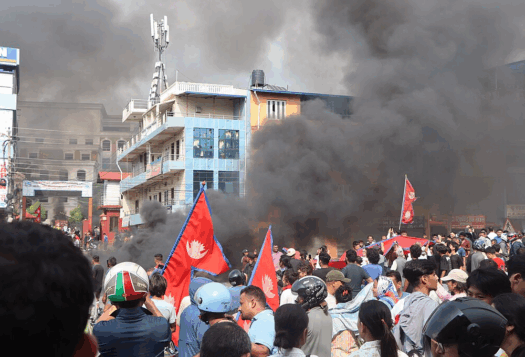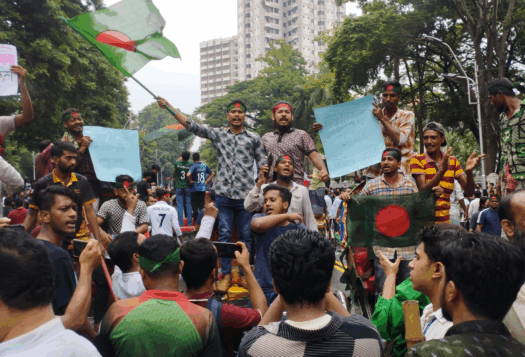
The ongoing farmers’ movement against recent agricultural reforms they believe threaten their livelihoods has gained nationwide traction and holds a great deal of political significance. The widespread public sympathy that the movement garnered as a “sons of the soil” struggle threatens eroding support for the ruling Bharatiya Janata Party (BJP). However, when, on Republic Day, a section of protestors hoisted the Nishan Sahib—the Sikh religious flag—at Delhi’s Red Fort, they risked undercutting some of the public support for the protest. This flag hoisting violated rules set by the protest organizers and seemed to pave the way for the BJP to delegitimize the protests using Hindu nationalist rhetoric. The BJP has responded this way to past political movements, including the widespread anti-Citizenship Amendment Act (CAA) protests in late 2019 and early 2020.
Unlike secular nationalists, the Hindu nationalist BJP opposes India’s heterogenous social character and seeks to elevate Hinduism as India’s premier cultural and political identity. It also aggressively campaigns on national security and territorial integrity. The act of hoisting the “Nishan Sahib” flag is not unprecedented: the Delhi Sikh Gurdwara Committee had done the same with government support during the 2014 “Fateh Diwas” ceremony. Taking advantage of a lack of public awareness of this, the BJP has instead propagated the false notion that the protesting farmers had raised a pro-Khalistani separatist flag at the Red Fort.
For the BJP, which in the past has weaponized fear of damage to India’s territorial integrity to mobilize its Hindu support base, linking the ongoing Sikh-dominated farmers’ protest to the “Khalistan movement”—a secessionist movement demanding a separate nation for Sikhs—was its most persuasive means of delegitimizing the protest. In writing a narrative connecting the farmers’ protests to a threat to India’s national identity—unaccommodating of separatist movements—the BJP is once again playing the “politics of fear.” Instigating fear among India’s Hindu majority using Islamaphobic language like “Love-Jihad” and “Muslim domination” and crying Kashmiri separatism has been a successful strategy for the BJP in neutralizing opposition and maintaining electoral support. Since the farmers’ movement enjoys vast public support that does not fall along religious-identity fault lines—and farmers are romanticized in the Indian consciousness—the government is unlikely to succeed in labeling movement supporters “anti-nationals” as it has in response to anti-Hindutva dissent.
Hindu Nationalist Rhetoric in Response to Dissent
The government is unlikely to succeed in labeling movement supporters “anti-nationals” as it has in response to anti-Hindutva dissent.
The BJP’s attempts to depict the farmers’ protest as “anti-national” is the latest incarnation of a strategy it has long employed to rally its support bases, including the 2016 Note ban, the 2019 Pulwama attack, and the 2019 CAA protests.
The BJP effectively countered the massive protests that erupted over the CAA by polarizing the electorate and enflaming divisions between Muslims and Hindus. By depicting the CAA as an attempt to protect Hindus from illegal Muslim immigrants, the BJP sought to win over Hindu support for the law. BJP officials also depicted the anti-CAA protests as anti-national and “appeasing Muslims.” Prime Minister Narendra Modi justified the law as protecting persecuted minorities in Pakistan, saying that those who protested the CAA refused to acknowledge these atrocities.
The BJP has built this strategy of labeling dissenters “anti-nationals” over the past several years to protect its advantage in elections. In 2016, when the demonetization drive proved damaging to the economy, the BJP managed to avoid electoral consequences by successfully portraying the policy as a sacrifice for the nation and calling those who criticized it anti-national. When the Pulwama attack exposed a government security failure, the BJP diverted public attention and built hardline nationalist support by retaliating through the Balakot Air Strikes. Months later, the party gained seats in the 2019 general elections.

“Anti-nationalism” and Misinformation
The farmers’ movement is not an explicitly anti-Hindutva movement and has wide-ranging support, two qualities that have immunized it in part against government-attempted propaganda. BJP leaders attempted at the very beginning to label the protests “Pro-Khalistan,” thereby “anti-national,” yet these efforts have largely proven unsuccessful. In November 2020, the Haryana BJP Chief Minister Manohar Lal Khattar endorsed this conspiracy narrative. Later BJP General Secretary, Dushyant Gautam, and BJP MP from Rajasthan, Jaskaur Meena accused protesting farmers of “Khalistan” links. These allegations were all met with harsh criticism from opposition and BJP leaders alike.
The anti-nationalist tag did not stick to the protesting farmers—as it has to Muslim-dominant or opposition party organizations—perhaps because they represent a substantial segment of the Indian economy and compose a variety of religious and cultural groups, including the Hindu Jat community. The “farmer” is also a widely romanticized symbol of Indian identity. This “farmer” identity does not so easily play into the Hindutva and Islamophobia in Indian society that has helped the BJP stoke divisions and mobilize its base on other political issues.
The Republic Day flag controversy regardless gave the BJP an opportunity to spread misinformation and about the movement. The BJP’s propaganda efforts—involving hundreds of thousands of WhatsApp groups and tens of thousands of fake social media handles—have likely misled millions about farmers’ real cause. For instance, a Facebook video circulated of protestors raising pro-Khalistan slogans and defiling the Indian flag in California—misconstrued as agitating Indian farmers—was shared almost a quarter of a million times and viewed by 1.8 million people within two days. Right-wing supporters, including Bollywood star Kangana Ranaut, weaponized this fake-video to vilify the protesting farmers as “Pro-Khalistan.”
In November 2020, a viral video clip of people chanting slogans favoring “Khalistan” and “Pakistan,” during a 2019 World Cup Cricket was misidentified as an Indian farmers’ protest. BJP Mahila Morcha national media chief Priti Gandhi tweeted this fake video. By early December, a picture of a person carrying placards containing pro-Khalistan slogans— captured originally during the separatist group’s meeting in 2013—had widely circulated as an image of a farmers’ protest.
Although this propaganda about the Red Fort moment made some members of the public apprehensive, it has not appeared to have succeeded in undercutting the movement or its support.
A Path Forward for the Farmers
The failure of the anti-CAA protests—which had massive participation and international attention—illustrated that any protest that did not make inroads with the BJP-voting electorate would be hard-pressed to influence the government in any way.
The failure of the anti-CAA protests—which had massive participation and international attention—illustrated that any protest that did not make inroads with the BJP-voting electorate would be hard-pressed to influence the government in any way. The government has consistently played up majoritarian sentiments to mask its failed policy programs, including demonetization and the wide economic hardship it generated. To apply effective pressure on the government, the farmers must considerably expand their support base and make a dent in the BJP’s voter bases. The BJP’s electoral performance in the upcoming legislative polls will be a litmus test for the farmers’ movement.
Targeting the religious identity of critics and crying “anti-national” has been the BJP’s modus-operandi for neutralizing dissent in the past and it will continue employing this strategy against the farmers’ protest. Given the government’s success using propaganda to support its political ends, farmers must keep their widely sympathetic message at the core of the protests to successfully counter the BJP’s “anti-national” messaging. As the farmers’ movement enters its fifth month, what is abundantly clear is the government’s deepening weaponization of Hindutva and the shrinking space for true dissent in India.
***
Image 1: Wikimedia Commons
Image 2: NurPhoto via Getty Images


